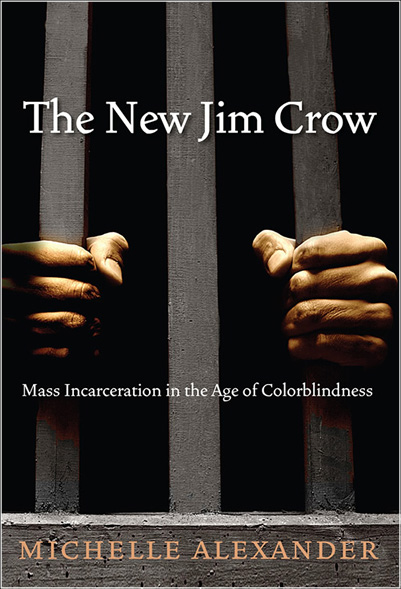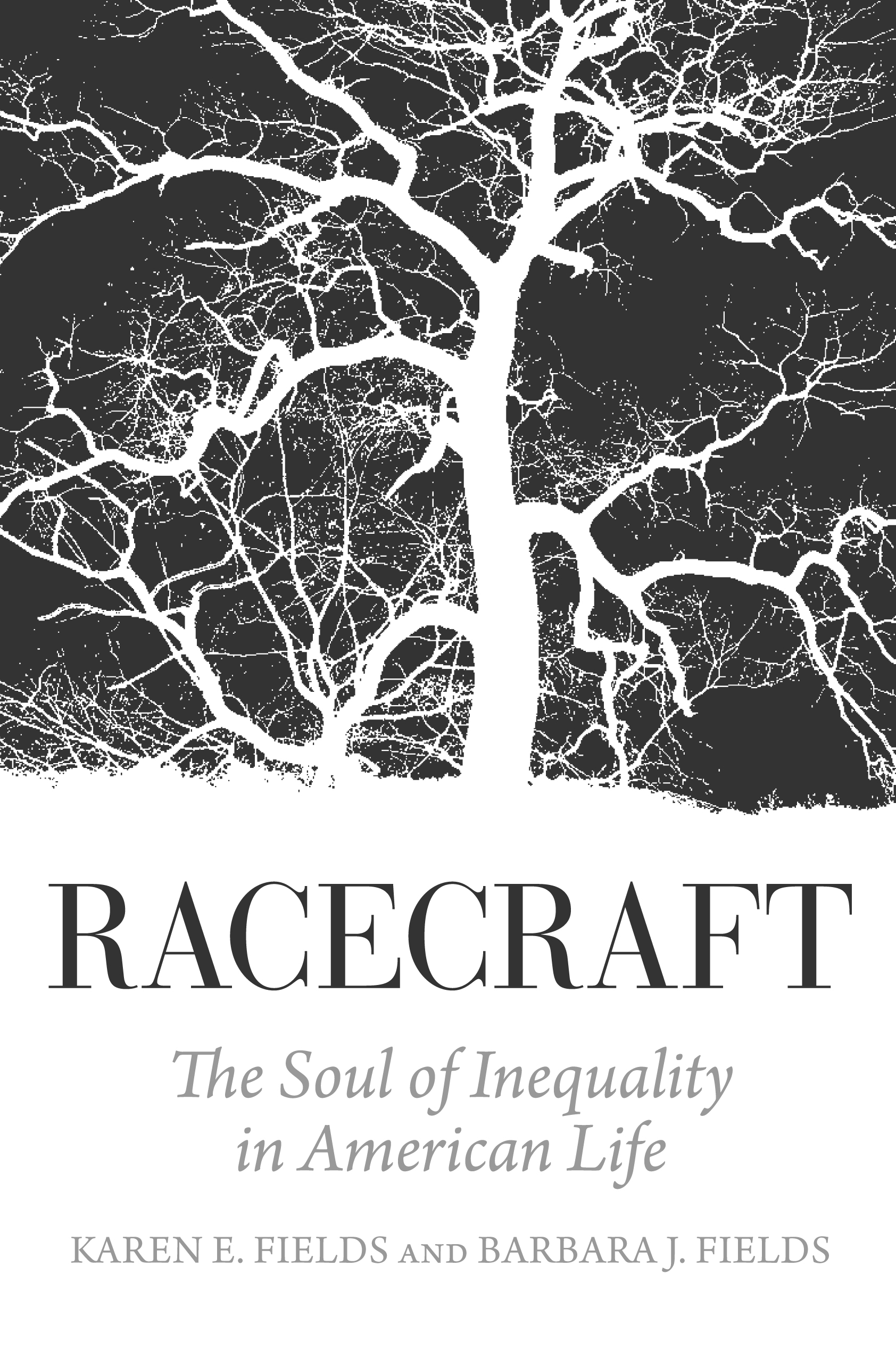When people ask me about the steps to empathize with someone who’s been incarcerated, as if – and in some ways, there is a grand liberal tradition of wanting to imagine that you can feel black pain, which is itself almost always an exercise in violence and privilege. Not just something that can’t be done. It is actually an exercise in violence. And so I actually think the challenge is to turn back upon yourself, and rather say: What would it feel like to feel that – to actually turn to yourself and say – what does it feel like to be in this moment, in this country that incarcerates a greater proportion of its citizens than any nation in the world, and that has built an elaborate system of cages that actually does cage black people, and that’s how it came to be? What does it feel like to be on the side of that where I pay taxes for that, and the defense happens mostly in my name? And see if you can get yourself there, rather than imagining [that you can feel black pain]. And I think if you can feel that, yourself as someone who is inflicting massive pain, then that can become your barometer for where we are.  My barometer for where I am is not how I imagine black criminality.  My barometer for where we are is: How complicitous am I for this massive amount of systemized, enforced extraction of pain and death?
– Naomi Murakawa, from “Naomi Murakawa and Eddie Glaude in Conversation – The First Civil Right,” Princeton Community Television. Recorded at Labyrinth Books, 12 Mar. 2015.  (The above statement begins near minute 54.)
No “we” should be taken for granted when the subject is looking at other people’s pain.
–Â Susan Sontag, Regarding the Pain of Others (New York: Farrar, Straus, & Giroux, 2003), p. 7
Nothing in all the world is more dangerous than sincere ignorance and conscientious stupidity.
–Â Martin Luther King Jr., assassinated on this day in 1968 and quoted in Michelle Alexander, The New Jim Crow, p. 203
Naomi Murakawa’s remark resonates deeply because I have been reading and thinking and writing about racism –Â a form of social violence that I have never had directed at me. I’m writing a book, currently titled Was the Cat in the Hat Black?: Structures of Racism in Children’s Literature. To reiterate, I’ve never been on the receiving end of racism. Yet, as a white male, I have – every day of my life –Â benefitted from institutional racism and sexism.
But writing about privilege has a tendency to shift the focus too much to the oppressor. While addressing the oppressor’s role is important and necessary work, it can have the unfortunate, even immoral, consequence of shifting attention away from those in pain. Beneficiaries of racism and sexism do have a much greater moral responsibility to fight these structures of oppression, but narratives about white men (such as myself) voicing this awareness have a tendency to become self-congratulatory. And, frankly, you don’t get a cookie for doing the right thing.
 Murakawa’s comment nicely illuminates the ways in which affect can mobilize oppressors to challenge their complicity in that oppression. Since my taxes underwrite the nation’s prison industrial complex, I’m responsible for the pain and death inflicted. That’s a helpful –Â and, of course, profoundly soul-crushing –Â way of shifting the emphasis away from the facile, ersatz empathy of merely imagining someone else’s pain, and towards acknowledging one’s role in perpetuating this systemic violence.
Murakawa’s comment nicely illuminates the ways in which affect can mobilize oppressors to challenge their complicity in that oppression. Since my taxes underwrite the nation’s prison industrial complex, I’m responsible for the pain and death inflicted. That’s a helpful –Â and, of course, profoundly soul-crushing –Â way of shifting the emphasis away from the facile, ersatz empathy of merely imagining someone else’s pain, and towards acknowledging one’s role in perpetuating this systemic violence.
As Murakawa says, empathy is not only impossible but is itself a form of violence against the oppressed. And, as Susan Sontag says, “No ‘we’ should be taken for granted when the subject is looking at other people’s pain.” Sympathy, however, is possible –Â so long as it’s cognizant of its limits. Certainly, sympathy is insufficient on its own, but it can motivate people to take the next step that Murakawa describes.
 If the second paragraph’s concluding sentence implies that I’m “doing the right thing” in undertaking this book on structural racism in children’s literature, I hereby redact that implication. Yes, I would like to be doing the right thing; I hope my work makes some sort of positive difference. But it’s presumptions, even arrogant, to suggest that. The profound limitations of my raced subject position enhances the likelihood that I will come up short. Obviously, I’m doing the research, reading works by Michelle Alexander, Karen Fields and Barbara Fields, Nell Irvin Painter, Randall Kennedy, Eduardo Bonilla-Silva, Michael Omi and Howard Winant, Michelle Martin, Kate Capshaw, Rudine Sims Bishop, Robin Bernstein, Claire Bradford, Zetta Elliott, and many others. (I have not yet read Murakawa’s The First Civil Right: How Liberals Built Prison in America, but it’s now on my list.)
If the second paragraph’s concluding sentence implies that I’m “doing the right thing” in undertaking this book on structural racism in children’s literature, I hereby redact that implication. Yes, I would like to be doing the right thing; I hope my work makes some sort of positive difference. But it’s presumptions, even arrogant, to suggest that. The profound limitations of my raced subject position enhances the likelihood that I will come up short. Obviously, I’m doing the research, reading works by Michelle Alexander, Karen Fields and Barbara Fields, Nell Irvin Painter, Randall Kennedy, Eduardo Bonilla-Silva, Michael Omi and Howard Winant, Michelle Martin, Kate Capshaw, Rudine Sims Bishop, Robin Bernstein, Claire Bradford, Zetta Elliott, and many others. (I have not yet read Murakawa’s The First Civil Right: How Liberals Built Prison in America, but it’s now on my list.)
Yet, somehow, in this project more than any other I’ve undertaken (including the biography of Johnson and Krauss), the research feels insufficient.
I think it comes down to this. I aspire to be an ally, but I would never call myself an ally. If and when a member of an oppressed group calls me an ally, I feel grateful and humbled. But a member of a dominant group cannot confer allyhood on himself or herself. Nor, of course, does the power to designate allyhood reside in one member of a group facing institutional oppression. However, that one individual has a better ability to evaluate allyhood than I do. Straight, white men do not get to call ourselves allies. But we can and should try to be allies.
In other words, it all comes down to the work itself. And, on that note, I should get back to work.

M w
Philip Nel
Rachel
Philip Nel
Rachel